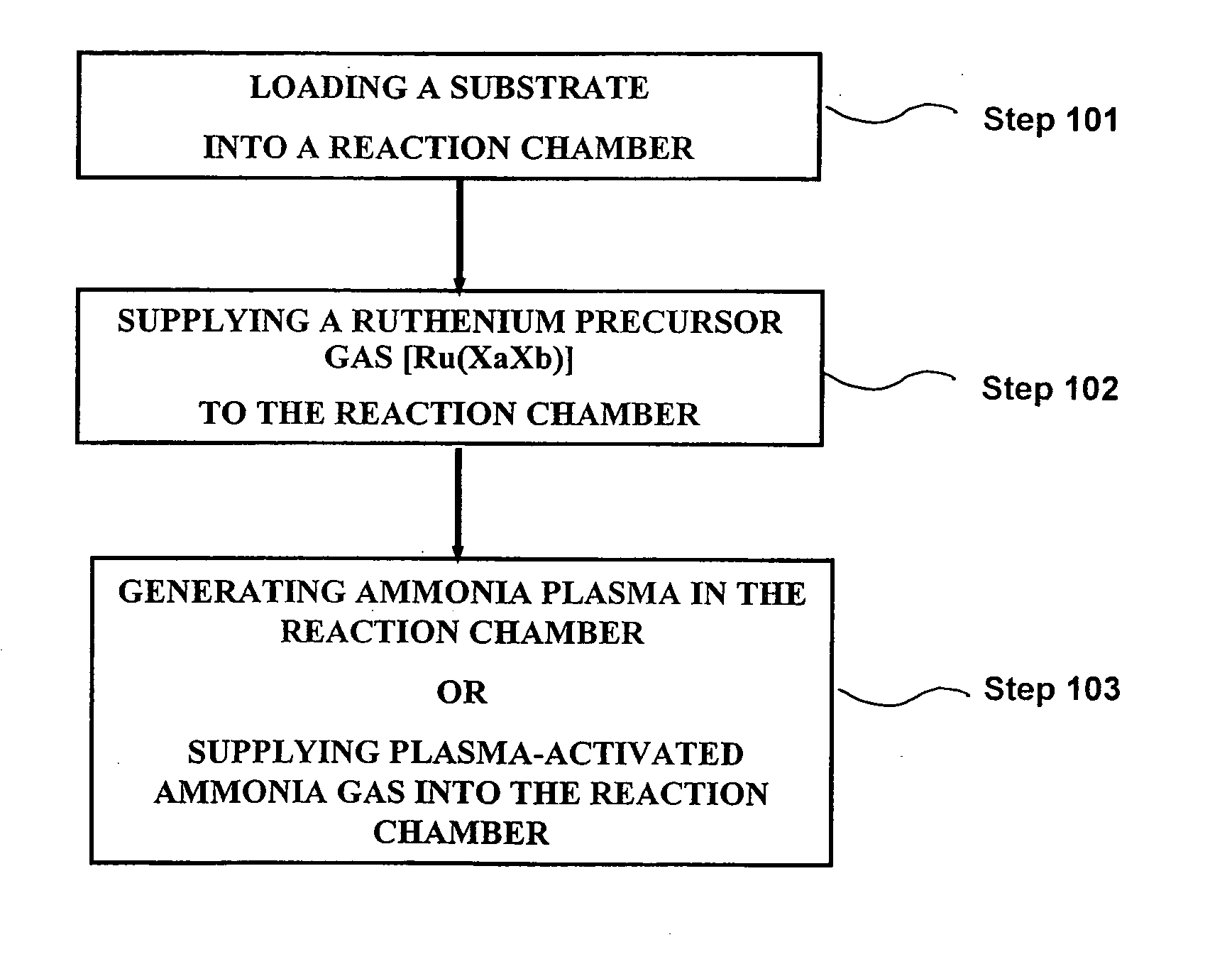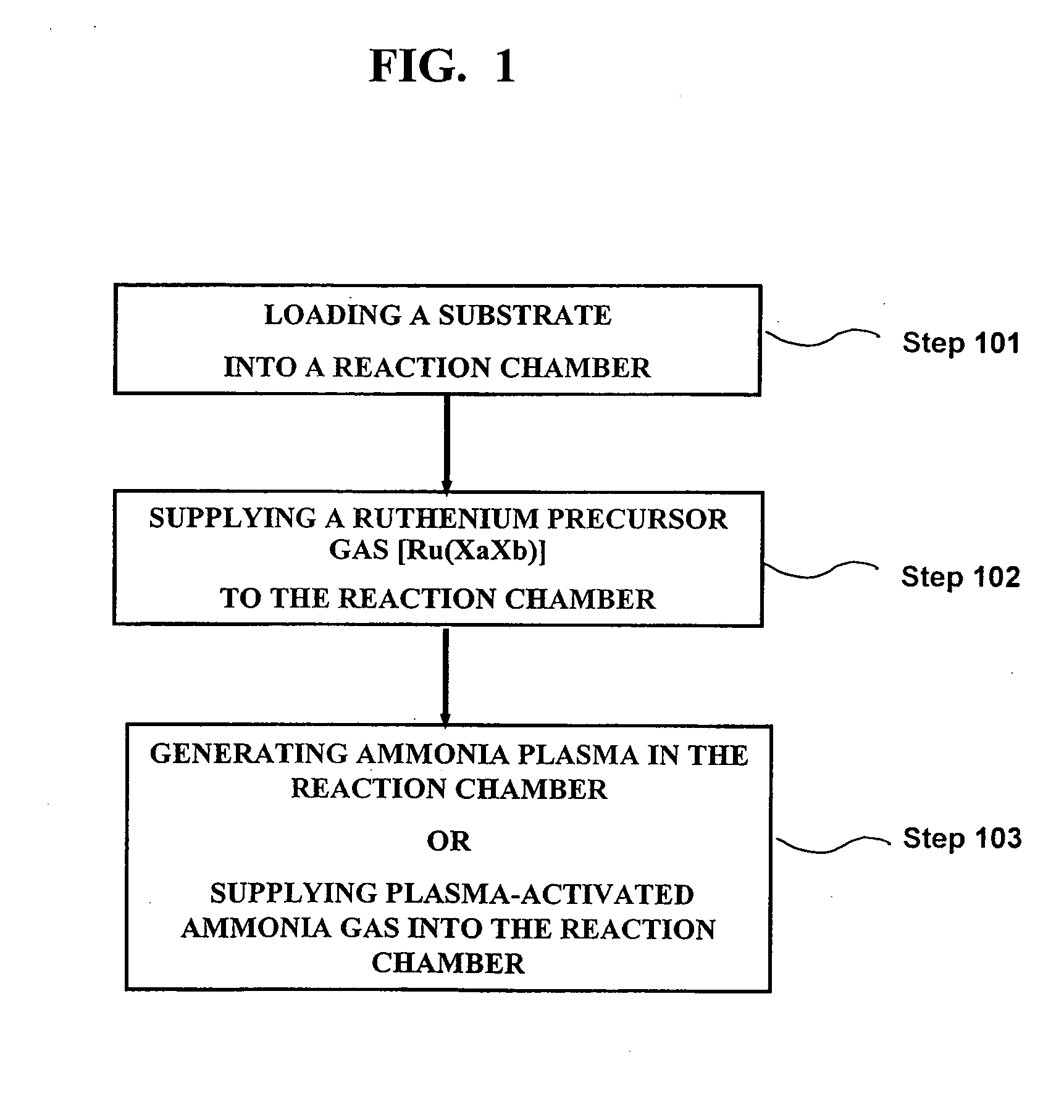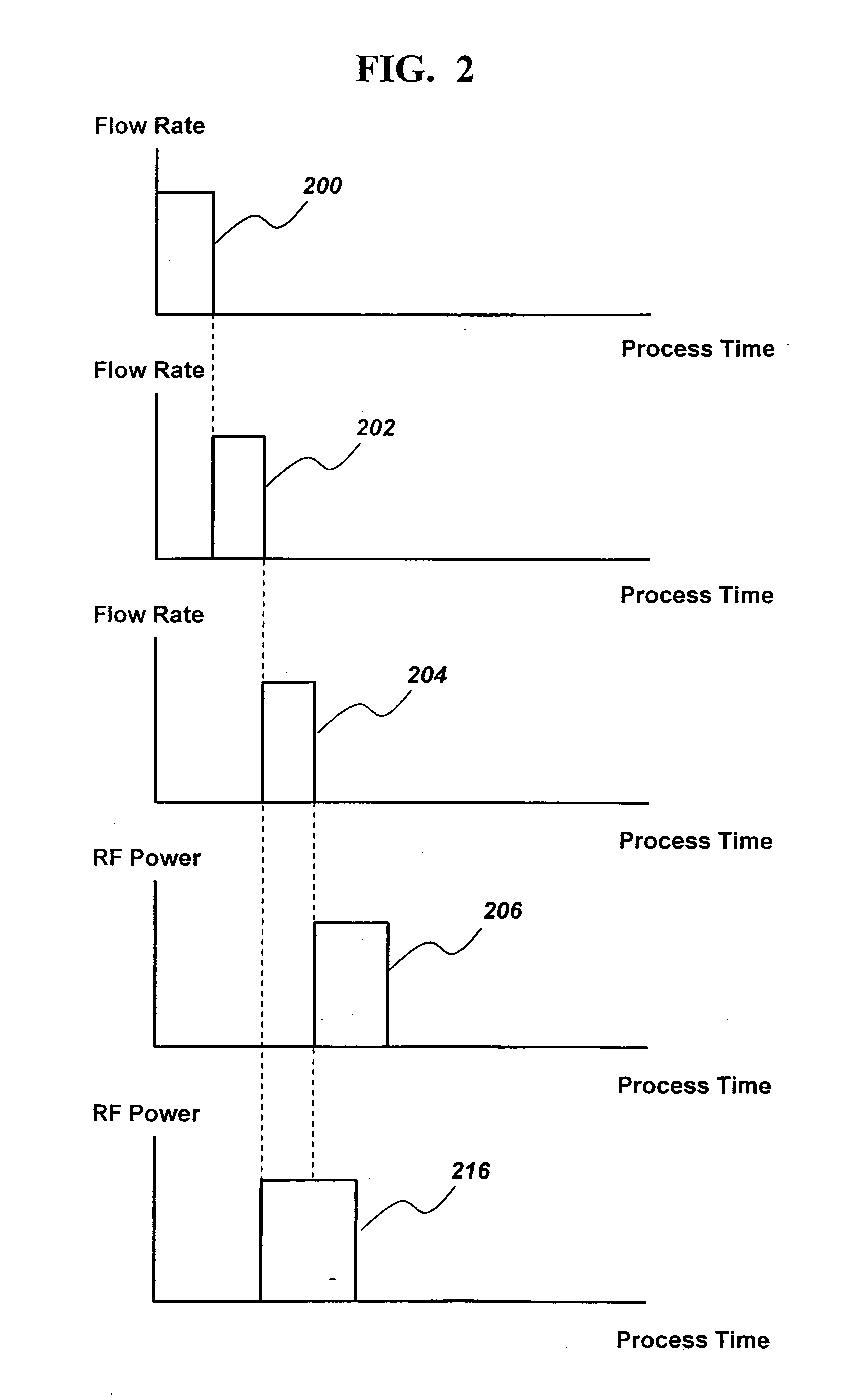Method of forming a ruthenium thin film using a plasma enhanced atomic layer deposition apparatus and the method thereof
- Summary
- Abstract
- Description
- Claims
- Application Information
AI Technical Summary
Problems solved by technology
Method used
Image
Examples
embodiment 1
[0056] After the preparation steps described above, referring to FIG. 2, the ruthenium precursor Ru(EtCp)2 in gaseous state 200 is supplied into the reaction chamber for the time duration between 0.02 and 20 seconds, thereby the ruthenium precursor gas is adsorbed onto the surface of the substrate. The ruthenium precursor gas un-adsorbed and remaining in the reaction chamber space is purged by flowing an inert gas 202 for the time duration between 0.1 and 10 seconds, ammonia gas(NH3) as a reactant gas 204 is supplied into the reaction chamber for the time duration between 0.02 and 10 seconds, plasma 206 is generated in the reaction chamber by applying RF power in the reaction chamber for the time duration between 0.02 and 10 seconds so that a ruthenium thin film is deposited on the surface of the substrate, and an inert gas is supplied(not shown) to the reaction chamber to purge the reaction chamber. The above steps are repeated until a ruthenium film layer to a desired thickness is...
embodiment 2
[0057] After following the preparation steps described above, referring to FIG. 2, the ruthenium precursor Ru(EtCp)2 200 in a gaseous state is supplied into the reaction chamber for the time duration between 0.02 and 20 seconds, ammonia gas 202′ is supplied into the reaction chamber for the time duration between 0.1 and 10 seconds in order to purge the ruthenium precursor gas un-adsorbed onto the surface of the substrate and remaining in the reaction chamber space, and while ammonia gas 204′ is continuously flown through the reaction chamber, plasma is generated 216′ in the reaction chamber by applying RF power in the reaction chamber for the duration between 0.02 and 10 seconds to deposit a ruthenium thin film on the surface of the substrate. After the plasma generation period 216′, an inert gas is supplied(not shown) to the reaction chamber to purge the reaction chamber. Alternatively, ammonia gas(NH3) is also used for purging the reaction chamber after the plasma generation perio...
embodiment 3
[0058] After following the preparation steps described above, a gas mixture of nitrogen gas(N2) and hydrogen gas(H2) is used in place of ammonia gas(NH3) as in Embodiment 1.
[0059] The gas mixture of nitrogen gas and hydrogen gas activated by plasma behaves very similarly to the ammonia gas activated by plasma, wherein the gas mixture of nitrogen gas and hydrogen gas does not react with the ruthenium precursor at the temperature lower than 400° C. without activation by plasma, thereby such gas mixture, when activated by plasma, is used as a reactant gas in combination with the ruthenium precursor according to the present invention, and also such gas mixture without activation by plasma is used as a purge gas.
[0060] In this exemplary embodiment, the remaining process conditions used for depositing a ruthenium thin film are the same as the process conditions for Embodiment 1 above.
[0061] After following the preparation steps described above, referring to FIG. 2, the ruthenium precur...
PUM
| Property | Measurement | Unit |
|---|---|---|
| Temperature | aaaaa | aaaaa |
| Temperature | aaaaa | aaaaa |
| Time | aaaaa | aaaaa |
Abstract
Description
Claims
Application Information
 Login to View More
Login to View More - Generate Ideas
- Intellectual Property
- Life Sciences
- Materials
- Tech Scout
- Unparalleled Data Quality
- Higher Quality Content
- 60% Fewer Hallucinations
Browse by: Latest US Patents, China's latest patents, Technical Efficacy Thesaurus, Application Domain, Technology Topic, Popular Technical Reports.
© 2025 PatSnap. All rights reserved.Legal|Privacy policy|Modern Slavery Act Transparency Statement|Sitemap|About US| Contact US: help@patsnap.com



